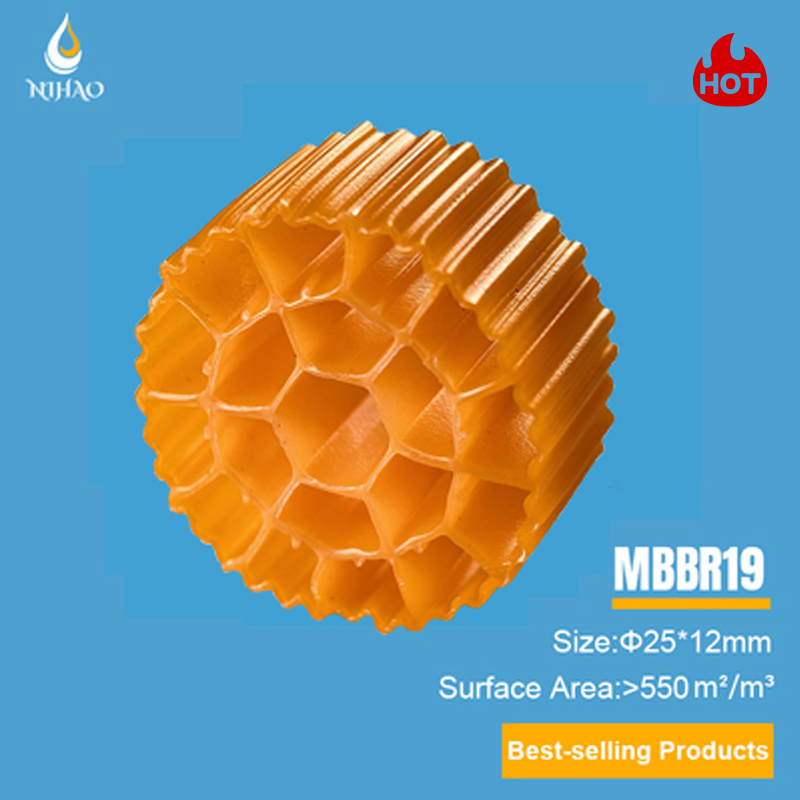 +86-15267462807
+86-15267462807
MBBR (Moving Bed Biofilm Reactor) technology is a widely used method for wastewater treatment. It offers several advantages over traditional activated sludge systems, making it a popular choice for various applications. In this article, we will explore the key points to understand about MBBR and how it can benefit water treatment processes.
One of the primary advantages of MBBR is its ability to enhance biofilm growth. The system utilizes plastic biofilm carriers, which provide a large surface area for microorganisms to attach and grow. These carriers serve as a habitat for microorganisms, promoting effective wastewater treatment. The bio filter media manufactured by Nihao, for example, offers a specially designed surface structure that enhances biofilm development and treatment efficiency.
Another significant benefit of MBBR is its efficient organic matter removal capability. The biofilm formed on the MBBR media facilitates the degradation of organic pollutants in wastewater. Microorganisms present in the biofilm utilize organic compounds as a food source, breaking them down and reducing their concentration in the water. This process allows for the effective removal of organic pollutants such as proteins, carbohydrates, and fats.
MBBR systems can also be designed to achieve both nitrification and denitrification processes. Nitrification involves converting ammonia into nitrate, while denitrification converts nitrate into nitrogen gas, thus removing harmful nitrogen compounds from the wastewater. By controlling the oxygen supply and hydraulic retention time, MBBR systems can facilitate these processes, resulting in proper nitrogen removal.
Flexibility and scalability are additional advantages offered by MBBR systems. They can be easily adapted and expanded to meet varying treatment requirements and accommodate changes in wastewater load. This makes MBBR suitable for both small and large-scale water treatment applications. If there is a need for increased treatment capacity, additional biofilm carriers can be added to the system without significant infrastructure changes, allowing for easy expansion.
Reducing footprint is another benefit of MBBR technology. Compared to traditional activated sludge systems, MBBR offers a more compact solution for water treatment. The high biofilm surface area provided by the carrier media allows for a higher biomass concentration, thereby reducing the required reactor volume. This efficiency in spatial utilization is particularly advantageous in situations where the available space is limited.
MBBR systems are known for their robustness and resilience. They can handle fluctuating loads and challenging wastewater conditions. The attached biofilm provides a stable and resilient microbial community, ensuring consistent treatment performance. The diverse microbial community in the biofilm can adapt to changing conditions, guaranteeing reliable treatment performance even during peak loads or changes in influent characteristics.
Furthermore, MBBR technology can be easily integrated into existing wastewater treatment plants as a retrofit or used as a standalone treatment system. This integration provides an effective and efficient solution for upgrading and enhancing the performance of conventional treatment processes. MBBR can be retrofitted into conventional activated sludge systems to increase treatment capacity, improve nutrient removal, or handle specific wastewater challenges without the need for significant infrastructure modifications.
By incorporating MBBR technology into their water treatment solutions, companies can offer clients an advanced and reliable method for treating wastewater. MBBR systems contribute to improved water quality and help meet stringent regulatory requirements. With its numerous advantages, MBBR continues to be a preferred choice for efficient and effective wastewater treatment.